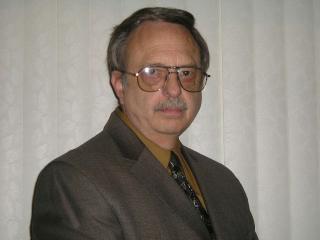

|
|
||||
Feature Articles: Alien Abductions, Cattle Mutilations, Conspiracies, Roswell, UFOsAnomalies Found in Roswell Metal
In 1996, Linda Moulton Howe, UFO investigator and author, submitted a piece of metal to biophysicist W. C. Levengood, of Grass Lake, Michigan, for analysis. The metallic fragment is alleged to have come from the debris field of the famous Roswell, New Mexico UFO crash of 1947. “From Electron Microscope and EDS (Electron Dispersive Spectroscopy) studies it was shown that the metal was composed of contiguous layers of pure bismuth (Bi) and layers of magnesium (Mg) containing between 2-3 percent zinc (Zn). The Electron Microscope images disclosed that Bi layers are in the range of 1-4 microns thick and the Mg layers 100-200 microns in thickness. When examined in cross section, it was apparent that the layers were not smooth and straight but rather contained micro-undulations. “One of the visits during Linda’s Odyssey was at the Carnegie Institute, Department of Terrestrial Magnetism, where she arranged for an Ion Microprobe – Isotope analysis of the Bi/Mg sample. In the final report by Dr. Erik Hauri, there are two findings, which stand out as being highly anomalous. 1. The Bi/Mg sample gave a rate of emission of Mg (+) ions, which was over 60 times the rate from the pure Mg metal standard. 2. In the Bi layer the isotope ratio of mass, 208/206, was 2.72. It was pointed out that this ratio is consistent with the known isotope composition of lead (Pb). “The presence of lead in the Bi layer was suggested as being due to some type of contamination. This, however, can be eliminated as cause of this unusual isotopic ratio in Bi, the reason being, no Pb was detected in the EDS studies. This ion probe work indicates unusual molecular structures in both the Bi and Mg layers. Therefore, it can be concluded that the make-up of this material is far from the ‘standard’ compositions.” Further studies at Dr. Levengood’s Pinelandia Biophysical Laboratory in Grasslake, MI, uncovered other anomalies connected with the strange metal. Dr. Levengood noted a chemical reaction in the sample when subjecting it to a “Charge Density Pulse” test (CDP). The method employed was via a patented device developed by himself and Dr. John L. Gedye for the purpose of detecting very subtle, self-organized groups of “charge density pulses” which are within all living systems. “Repeated trials of placing the Bi/Mg samples in water consistently disclosed the presence of bubble emission within a very short time after submerging in water. It was surprising to find that bubble emission continued for days. Since the bubbles are an indication that a chemical reaction is taking place, it would be expected that reaction products would be present in the base water. If Mg is being oxidized, a milky precipitate of MgO particles should be formed (a very common industrial compound). Instead, the water in which the reaction took place remained as clear and free of particles as in the initial state.” Dr. Levengood tested the metal fragment for the presence of hydrogen by putting a sample in a flask with a weak solution of acetic acid. Immediately the fragment began to bubble as in water. The top of the flask was covered with a double layer of saran wrap. After twenty minutes, the covering was removed and a flame was introduced to the mouth of the flask. The result was a very loud, active explosion inside the flask and at the opening, indicating the presence of a high concentrate of hydrogen. This result was repeated in subsequent tests and filmed by his associate, M. Ruben. “If a sample of the Bi/Mg metal is left in the weak acetic acid until the bubbling stops (usually within a couple of hours) it would be expected that reaction products would be found in the acid solution. It was astounding to find that the liquid was still as clear as when first placed in the flask and the only other visible material was very thin, black, spongy flakes from the Bi inter-layers. This experimental sequence was repeated a number of times and in every case the results were the same. The fact that very fine Bi particles remained in the solution clearly indicates that this element acted as a catalyst in the reaction process. “By comparing the mass of the Bi flakes left in the solution with the total mass of the Bi/Mg particle, it was determined from a number of repeat experiments that between 94% and 96% of the total mass of the original sample was still unaccounted for.” The question, as to the origin of this strange metallic fragment, remains. Many fragments, allegedly found at the Roswell crash site in 1947, have reportedly slipped through the cracks of the Army/Air force’s tight security grid. Could this particular fragment be one of them? Dr. Levengood observed in his thesis on the metal; “the high, active output of the hydrogen gas in these reactions, bring to mind obvious applications for use as hydrogen fuel cells. A rapid and complete reaction takes place without leaving behind reaction products which can interfere with the reaction and poison the system.” Could the fragment in question be from an advanced hydrogen propulsion system? Was it indeed recovered from the debris field of a downed exotic craft from elsewhere in the cosmos? In seeking the answers, even more questions have been posed. One fact that, to date, is not in question is that the unusual properties of this alloy remains a mystery to Dr. Levengood, as well as many other top-notch scientists who have examined it. An alloy comprised of different elements is not found in nature. It is forged by intelligent beings. After many years of testing, science is unable to determine the basis for this particular alloy’s composition . . . let alone duplicate it! David E. Twichell |
Alien Abduction Experience and Research
Copyright ©1996 - 2019. All Rights Reserved.
